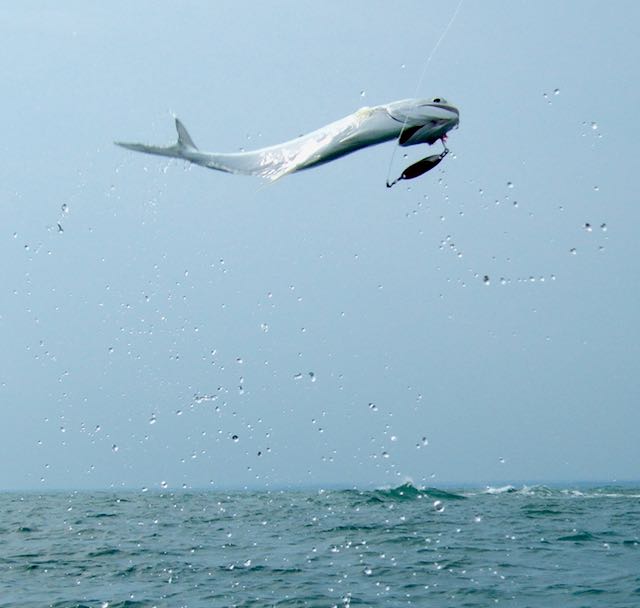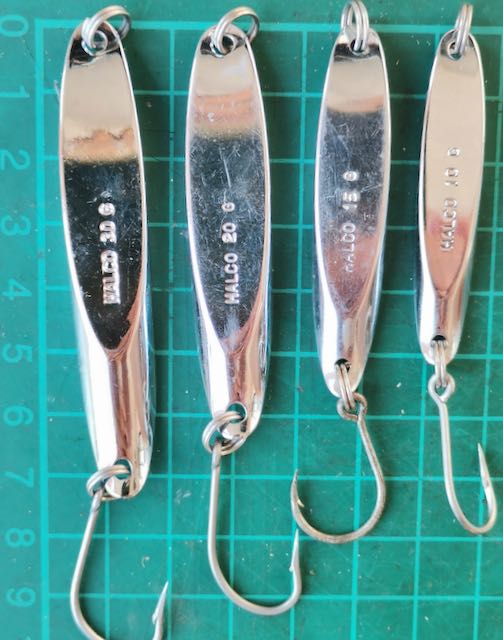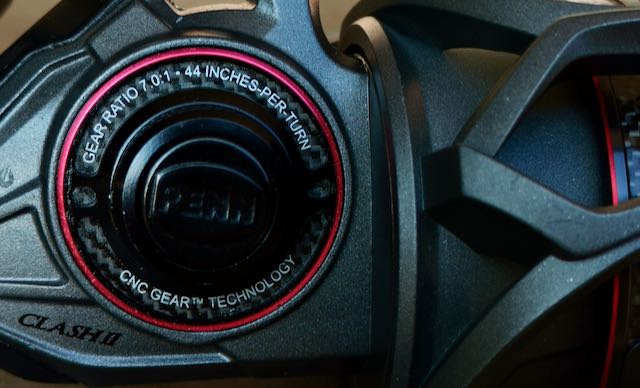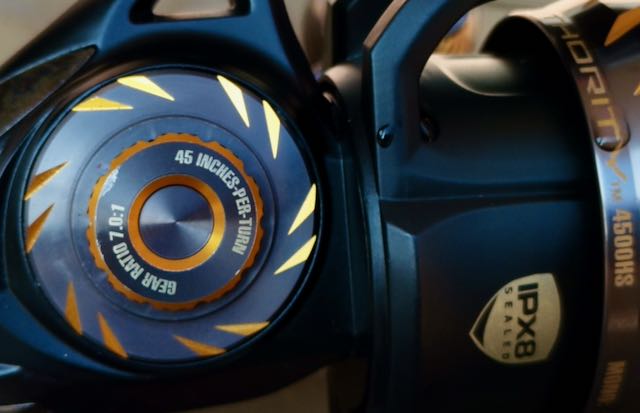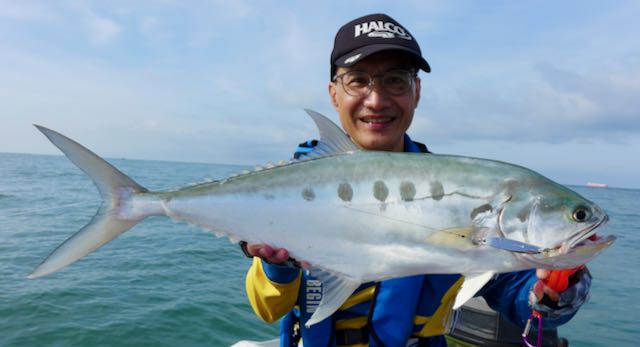
Casting lures for the spectacular
Queenfish!
By Christopher S.G. Tan
As a sport-fish, the Queenfish is highly rated. It pulls hard, gives acrobatic jumps and has great stamina. Queenfish often hunt in schools, driving schools of baitfish to the surface. This in turn attracts the birds, which are “signposts” we can see and head to from afar in order to target the queenfish.
When the queenfish are
readily feeding and taking any lure, it is easy to
catch them. However, they can often be selective,
ignoring most lures and choosing only certain types or
sizes of lures.
It can be frustrating to have a mass of queenfish busting bait on the surface right in front of you while totally ignoring the lure you cast out. At best you might get a quick glimpse of them following your lure before turning away.
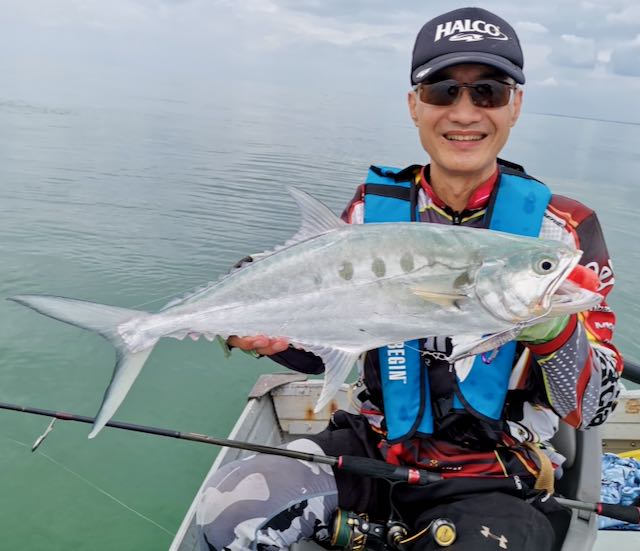
Queenfish caught with a 30gm Halco
twisty using a Penn Authority 4500 HS - high speed
spinning reel.
There are two key factors that can get these fussy queenfish to bite. The first is the lure. Often, they are feeding on small “ikan bilis” (anchovies) type forage, and the queenfish are locked on to feeding on them only. Any lure a lot bigger in size is ignored. Occasionally you can trigger them to strike on bigger sized lures, but dropping down the lure size to match their prey better is a big factor in getting them to strike if they are ignoring your lures.
My go-to lure to match the hatch is the Halco twisty, a chrome metal slice lure. The bright chrome finish is one of the key points in attracting the queenfish to strike. I find that using a bright shiny silver lure gets more strikes. Then, because the Halco twisty is a solid metal lure, it can be small in size to match the prey/forage better while being suitable for casting far and punching through any headwinds.
I like the 30gm twisty. It casts well and is reasonably small. However, there are times I will drop down to a 20gm twisty when I find that I cannot score as many hits on the 30gm. Often the baitfish are much smaller than the 30gm twisty and the small reduction in size of the 20gm twisty gets more hits. How about going smaller? The 15gm twisty, for instance, helps. I've dropped down to using 5gm twistys to get bites, though a change to lighter casting tackle is needed for these lighter metal slices, otherwise they will be difficult to cast far to reach those surface-busting queenfish in the distance.
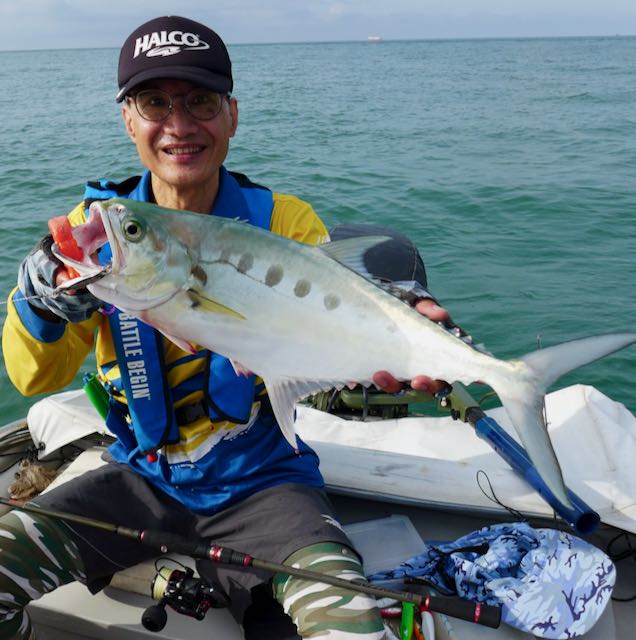
The twisty has curved ends that give it a great and attractive wobble as it is retrieved in the water. The erratic action probably attracts the queenfish to strike instinctively at this injured “baitfish” trying to escape!
The second factor that gets them to strike is the lure speed. This is a very important factor that is often overlooked by many anglers. Just recently there were two of us casting at queenfish busting bait on the surface. We were both casting twistys and while I was getting frequent follows, bites and hookups, he was getting none, not even a follow! I knew it was his lure speed retrieval. I told him to speed up his lure speed, by cranking as fast as he could, but he still got nothing, not even a follow.
I was using a Penn Clash II 4000 HS spinning reel – this reel has a line retrieval rate of 112cm/44” per turn of the handle. It has a higher speed of retrieval than the average spinning reel of this size and this was allowing me to make the twisty swim fast enough to turn on the queenfish!
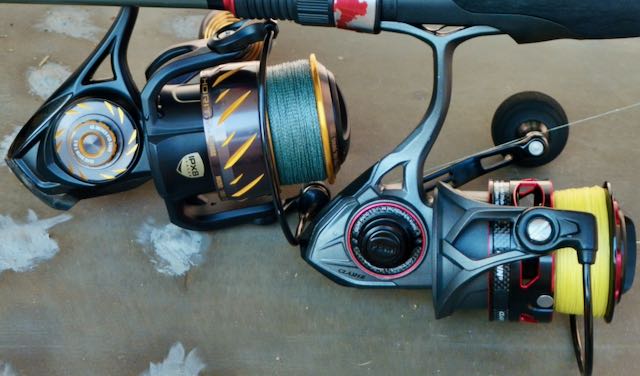
I had a Penn Authority 4500 HS reel on a spare outfit with me. This reel has a retrieval speed of 114cm/45”. I told my friend to use this outfit with his 30gm Halco twisty. Immediately upon using this fast reel, he started getting follows and attacks on his twisty lure. This was a very clear contrast to when he was using his own slower reel.

So these are two key factors that help in getting queenfish to bite when they are feeding all around, but not biting the lures that are cast to them.
- Use small shiny chrome metal lures like the Halco twisty that closely match the size of the baitfish they are feeding on.
- The lure must be retrieved very fast to get the queenfish to strike. Any high speed reel like the Penn Clash II 4000 HS and Penn Authority 4500 HS with fast retrieval rates in excess of 100cm is often a key factor in getting these pelagic speedsters to strike.
Conservation
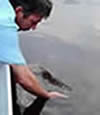
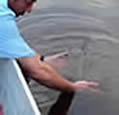
We need to protect and conserve our resources by practising catch and release of our sportfish and protecting the habitat of our fishes.
